
While the Chinese economy maintained medium-high growth over the past year, it also underwent industrial transformation and upgrading. Macro-economic data, medium industrial structure and micro individual enterprises all indicated that China has accelerated its step towards industrial transformation and upgrading, and achieved remarkable results.
Economic restructuring and transformation of growth mode see breakthroughs
In 2015, China sped up the optimization of the industrial structure. The government on the one hand promoted enterprises to obliterate outdated production capacity and absorb excessive production capacity, and on the other strengthened support to key areas that are in line with the direction of economic restructuring, transformation and upgrading.
Data from the National Bureau of Statistics (NBS) indicated that in all the 41 industrial divisions, total profits of 29 industries increased year on year, and 12 divisions declined. Oil processing, coking and nuclear fuel processing divisions witnessed substantial growth of 9.7 times. Power and heat production and supply, electrical machinery and equipment manufacturing, textile and automobile manufacturing industries all grew in different degrees.
But things are quite different in basic industries with severely excessive production capacity. In 2015, total profits of mining industry decreased by 58.2 percent year on year, oil and gas exploitation industry declined 74.5 percent year on year, and ferrous metal smelting and calendaring processing,coal mining and dressing industries all declined in various degrees.
“Though industrial enterprises were in difficult situation in 2015, we made achievements in industrial restructuring, transformation and upgrading. Industries that conform to the direction of transformation and upgrading, such as high-tech manufacturing and equipment manufacturing, are able to keep rapid earnings growth,” said He Ping from the industrial division of the NBS.
Xu Xianchun, Deputy Director of the NBS, believes that with support from a series of innovative and entrepreneurial activities and achievements, new industries grew rapidly. In 2015, the value added of high-tech and equipment manufacturing industries above the designated scale were up 10.2 percent and 6.8 percent respectively from the previous year, 4.1 and 0.7 percentage points faster than industries above the designated scale.
New businesses were booming. In 2015, sales of online retailing, express delivery business and mobile data traffic rose by 31.6, 48 and 103 percent respectively.
New products keep emerging. In 2015, output of new energy vehicle, industrial robot and smart television were up 161.2, 21.7 and 14.9 percent respectively year on year.
“Made in China” moves forward from mid- and low-end to high-end manufacturing
Industrial transformation can’t do without China’s backbone manufacturing industry and “Made in China 2025” has been raised to a national strategy. The export of China’s high-speed rail, nuclear power technology and new energy equipment was quite eye-catching in the past year. “Made in China” starts to upgrade from mid- and low-end to high-end manufacturing.
Take the photovoltaic manufacturing industry as an example, several ministries and commissions including the Ministry of Industry and Information Technology (MIIT) jointly issued the Opinions on Facilitating the Application of Advanced Photovoltaic Technology Products and the Industrial Upgrading in last June, requiring that for modules covered in the “Frontrunner Plan”, the proportion of polycrystal should be no less than 16.5 percent, while that of monocrystal should be no less than 17 percent. And their efficiency should be one percentage point higher than that of common products in average.
“The action plan will benefit the technology upgrading of China’s photovoltaic industry, turn back the price competition in the industry to brand competition, and raise higher requirement on manufacturers’ ability in manufacturing, innovation and resource integration. It also shows encouragement and guidance to photovoltaic products with high conversion efficiency and reliability”, indicated by Jin Baofang, the CEO of JA Solar and a deputy of the National People's Congress (NPC), during an interview with the www.cnstock.com.
Industrial development has proved that. Multiple advanced photovoltaic module producers have expanded their capacity of high-efficiency modules since the second half of last year. As to this, relevant person from the National Energy Administration (NEA) remarked that the size of power stations applied with products produced by the “forerunners” will exceed 6GW in 2016, meaning that the market share of high-end products will reach over 30 percent.
“Manufacturing industry plays a fundamental role and is an important battlefield in the competition among countries across the world. Only by boosting “Made in China” with “Created in China”, can China achieve real overtaking to outperform others in future development”, indicated by Zhang Chuanwei, chairman and chief executive officer of China Mingyang Wind Power Group and an a deputy of the NPC.
Zhang believes that the new driving force of “Created in China” comes from the people and civil enterprises. Technology innovation mechanism is critical and policy guidance is also demanded. Therefore, Zhang has submitted a proposal suggesting to establish a national special fund for innovation risk investment, build up comprehensive intellectual property work mechanism and reinforce corresponding implementation, and to foster innovative leading enterprises and optimize industrial integration.
Translated by Jennifer Lu and Adam Zhang
















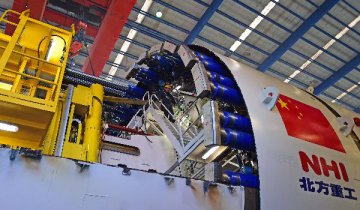
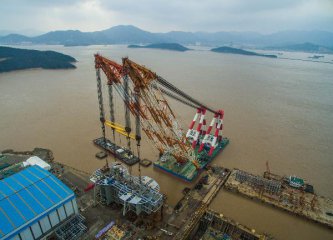
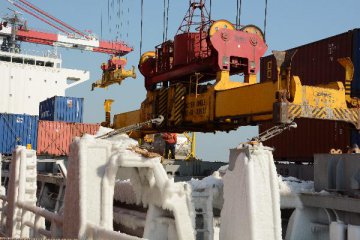

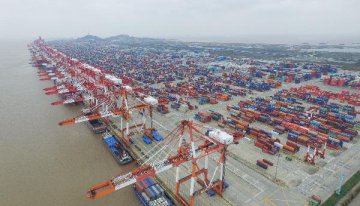
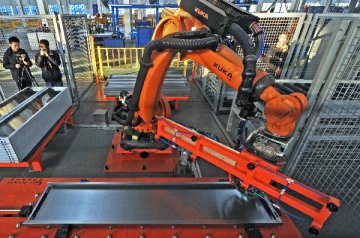


Latest comments